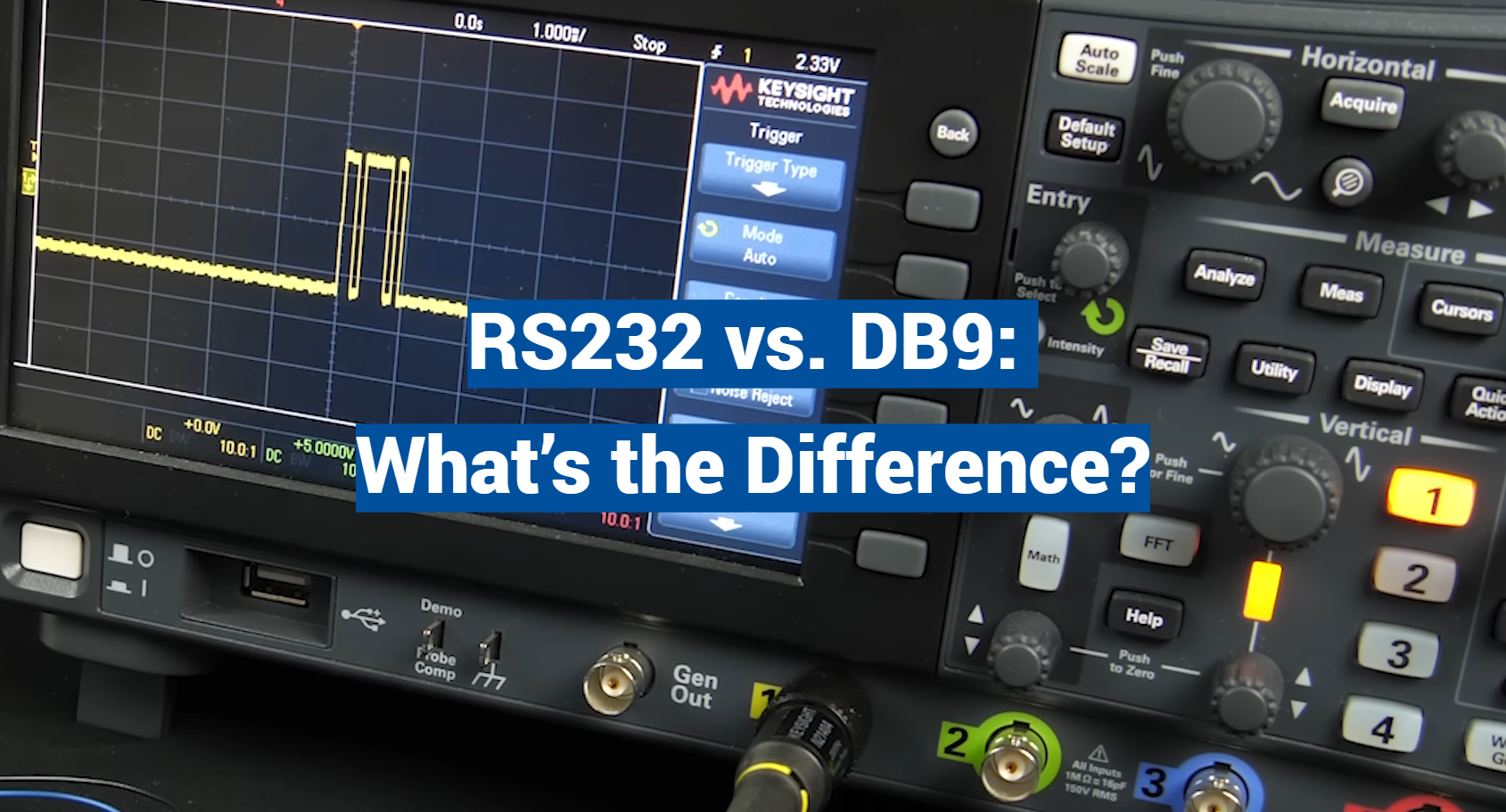Are you tired of feeling confused when it comes to choosing the right connection for your electronic devices? This informative blog post will unravel the mystery behind RS232 and DB9, the two commonly used serial interfaces. Many people mistakenly believe that RS232 and DB9 are the same thing, but in reality, they are quite different. So, if you’re ready to make an informed decision and put an end to the confusion, keep reading. By the end of this article, you will have a clear understanding of RS232 vs. DB9 and will know exactly which one suits your needs. So, dive in and demystify this fascinating world of connections!
What Is RS-232?
RS-232 can support up to two-way simultaneous communication, though it is usually limited to one-way communication at a time. It supports asynchronous data transmission, meaning that it can start and stop communication as needed, without the need for an external clock signal. In addition, RS-232 supports multiple types of baud rates, from 300 to 19200 baud per second [1].
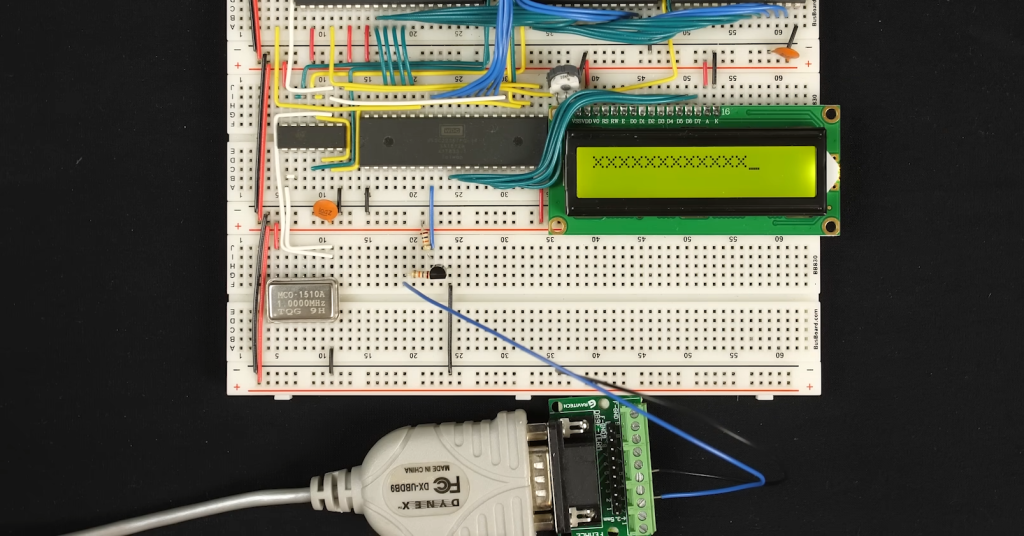
RS-232 Connectors
RS-232 uses standard 9 or 25-pin connectors to connect devices. 9-pin connectors are the most common and often have a “DB9” designation (where DB stands for Data Bus). These connectors can be used for both serial and parallel communications, and feature pins for signals like DTE/DCE, data bits 0-7, parity bit, plus ground. 25-pin connectors often have a “DB25” designation and are typically used for parallel communications.
The RS-232 protocol also provides several types of signals, including Request to Send (RTS), Clear to Send (CTS), Data Set Ready (DSR) and Data Carrier Detect (DCD). RTS and CTS signals are used to negotiate the transmission of data between two devices. DSR and DCD signals are used to indicate when the device is ready to receive data or when it has detected a valid signal from the other device.
How Does RS-232 Work?
PIN Numbering & Descriptions
RS-232 has a wide variety of options for the user regarding pin numbering and descriptions. It is important to know which pins are assigned to what purpose for proper communication between devices.
The most common pins used on an RS-232 connection are pins 2, 3, 4, 5, 7, 8 and 20. Pin 2 is the Receive Data (RxD) line, and Pin 3 is the Transmit Data (TxD) line. These pins are used to send and receive data between devices. The pins 4 and 5 are used as ground connections for shielding against external noise. Pin 7 is the Request To Send (RTS) line, which is used to indicate a device is ready to send data. Pin 8 is the Clear To Send (CTS) line, which tells the sending device that the receiving device is ready to accept data. Finally, Pin 20 is the Data Terminal Ready (DTR) line which signals to the other end of the connection when it is ready to operate.
RS-232 also provides for the use of a wide variety of other pins. These include lines for modem control, status signals, and error detection. By knowing which pins are used for what purpose, users can ensure that their devices will communicate properly.
SIGNAL Flow
Once the pins have been assigned for specific communication roles, their signals must be coordinated in order to communicate properly. The signal flow in an RS-232 connection is generally described as “host-centric”. This means that the host — the device sending data — will initiate communication by sending a signal on its RTS line. If it receives a response from the receiving device on its CTS line, then it will send data. The host will continue to transmit until it receives an error signal or a response from the receiving device indicating that the data has been received or understood.
Once the host is done sending data, it will switch its RTS line off and wait for another signal from the receiving device. When this signal is received, the host will again send data. This process continues until the communication between devices has been completed.
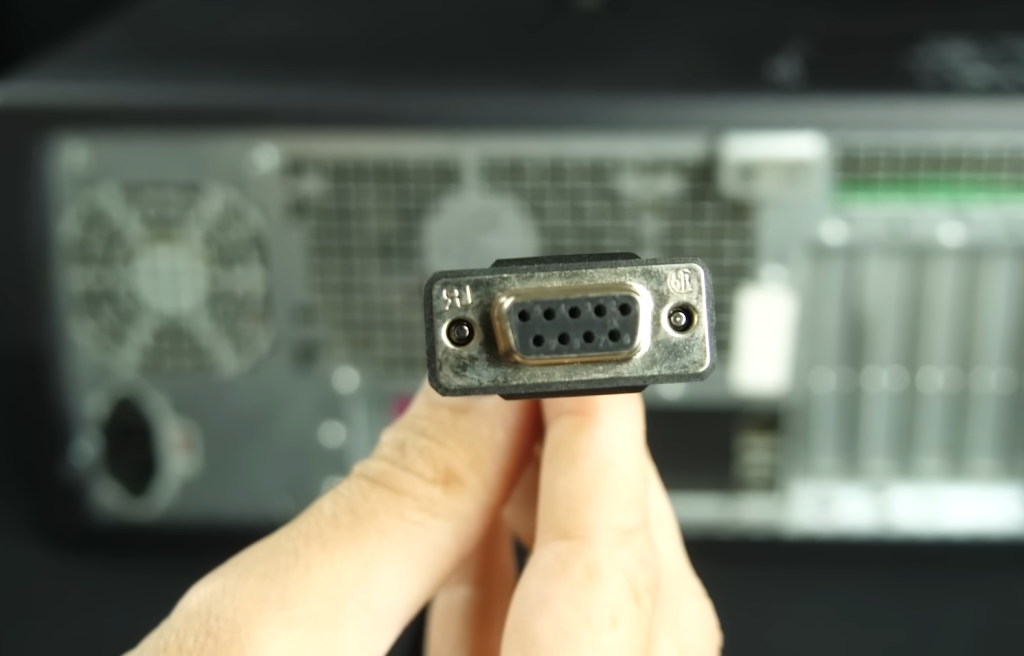
DTE (Computer) vs DCE (Modem)
In the RS-232 connection, there are two types of devices: the Data Terminal Equipment (DTE) and the Data Communications Equipment (DCE). The DTE is generally a computer, while the DCE is usually a modem. Each type of device has its own set of pins assigned for specific communication roles.
The DTE has pins 2, 3, 7 and 20 assigned for communication. Pin 2 is used for sending data while pin 3 is used for receiving data. Pins 7 and 20 are used to signal when the device is ready to send or receive data.
The DCE also has its own set of pins assigned for communication roles. Pins 5, 8 and 20 are used for communication. Pin 5 is used to power the device, while pins 8 and 20 are used to signal when the device is ready to send or receive data.
By understanding how RS-232 works, users can ensure that their devices will communicate properly with each other. When setting up an RS-232 connection, it is important to pay attention to pin numbering and descriptions, signal flow and the difference between DTE and DCE devices. With these considerations in mind, users can ensure that their RS-232 connection will be properly configured for successful communication.
Benefits of RS-232
RS-232 remains popular mainly due to its simplicity and ease of implementation. It requires only a few wires, making it easy to use in a wide range of applications. It’s also useful because it requires minimal circuitry, meaning that developers don’t need to spend too much money on making their product compliant with RS-232 standards.
RS-232 is a highly reliable connection and protocol, making it well-suited for use in mission-critical systems. It enables devices to communicate over long distances and through numerous interfaces, making it a great option for applications where data needs to be transmitted over large distances. Additionally, RS-232 connections do not require special hardware or software and can be used with virtually any device.
It’s also important to note that RS-232 is completely open-source, allowing developers the freedom to customize their products without worrying about licensing issues. This makes it an ideal choice for applications where customization is important. Furthermore, RS-232 connections are backward compatible, meaning they can easily be used with legacy systems.
RS-232 also has some other key advantages. It uses a robust and reliable protocol that ensures data is transferred accurately and quickly between devices. Additionally, it features error detection capabilities that help protect against potential errors in communications. Finally, it is a cost-effective and scalable solution that can be used in many applications.
Overall, RS-232 is an excellent choice for developers who are looking for a simple and reliable way to connect their devices. It’s also ideal for mission-critical applications because of its reliability and robustness. Moreover, it’s open-source nature makes it easily customizable, while its backward compatibility makes it great for legacy systems. Furthermore, it’s cost-effective and scalable, allowing users to tailor their implementations to their specific needs. All in all, RS-232 is a great option for developers who need an easy and reliable way to connect their devices.
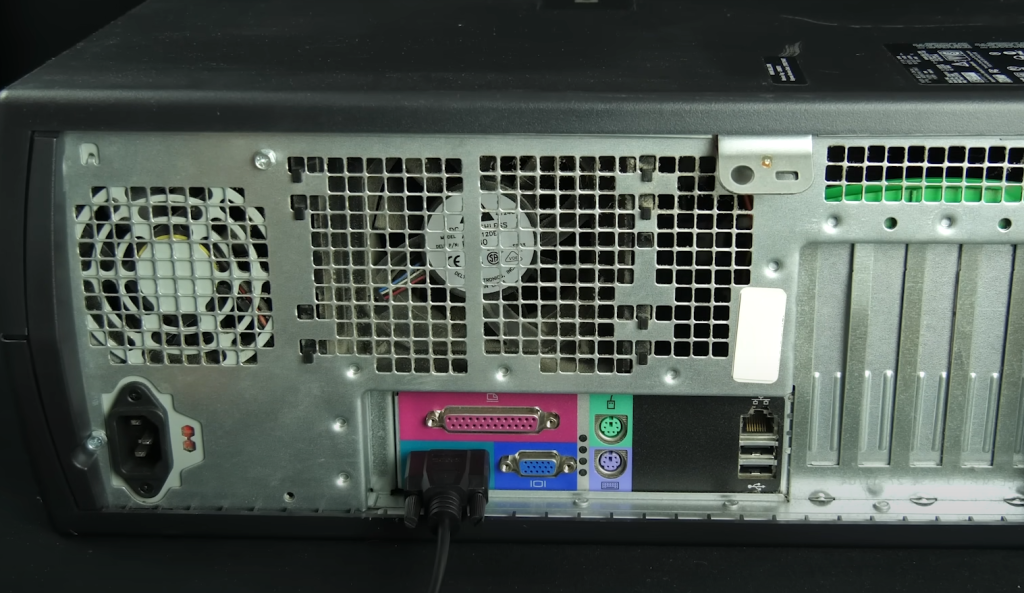
What Are Applications Of RS 232?
RS 232 is a versatile serial communication protocol commonly found in many industrial and commercial applications. It allows for full-duplex communication between two devices over short distances, making it an excellent choice for data transmission and control of remote equipment. Common RS 232 applications include:
- Industrial Automation– With its ability to control multiple system components with one line, RS 232 is an excellent choice for industrial automation applications. Common uses include managing sensors and actuators, controlling robotic systems, and monitoring long-distance communication lines.
- Data Acquisition – RS 232 can be used to gather data from external devices such as temperature or pressure sensors, barcode scanners, RFID readers, and other serial components. This makes it an ideal option for monitoring and controlling various aspects of a machine or system.
- Security & Access Control– RS 232 can be used to securely transfer data between two devices, making it a popular choice for access control applications. It is also regularly employed in security systems such as CCTV cameras and alarm systems.
- Data Logging– RS 232 can be used to store large amounts of data from multiple devices for monitoring and analysis. This is especially useful in industrial settings where large amounts of data must be logged, monitored, and analyzed over time.
- GPS Tracking & Navigation – RS 232 can be used to receive location information from a GPS receiver or other external device, making it a popular choice for navigation applications. It is also used to control embedded systems in mobile devices such as cars and boats.
- Digital Video Recorders– RS 232 is often used to control digital video recorders (DVRs), allowing users to transfer data between different systems and devices. It can also be used to configure the recording, playback, and storage of video content.
- Medical Instrumentation– RS 232 is a reliable protocol for the transmission of patient data from medical equipment to monitoring systems. It is also commonly used in biometric applications such as fingerprint scanners, barcode readers, and RFID readers.
- VoIP Applications– RS 232 can be used to control Voice over IP (VoIP) systems, making it an ideal choice for telecommunication applications. It is also regularly employed in industrial applications such as automated voice response systems.
RS 232 is an invaluable tool for many different industries and applications, providing a reliable connection between two devices over short distances. With its broad range of capabilities, it can be used to control and monitor a variety of equipment from sensors to medical instruments. As more and more industries turn towards automation, the importance of RS 232 is sure to increase in the years ahead.
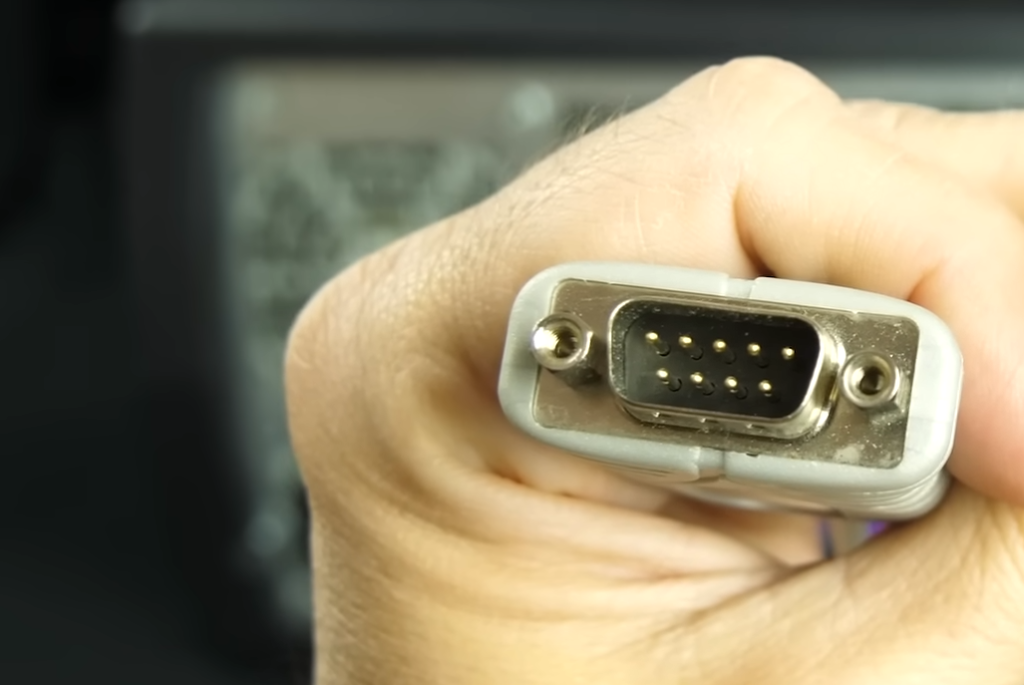
What is DB9 and how does it work?
DB9 is a digital connector used to transmit serial data between computers. It has nine pins that are used for different types of data transfer. There are two main types of DB9 connectors: one with male contacts and the other with female contacts.
The most common type of DB9 connection is an RS232 connection, which transfers data serially over two twisted pairs of wires. The data is sent in one direction at a time, and the two signals must be kept in exact synchronization to ensure accuracy. Other types of DB9 connections include RS485, which sends data simultaneously over two twisted pair cables, and USB-to-DB9 adapters that allow for direct connection between computers and peripherals like printers or scanners.
To use DB9 connectors, you will need either an adapter or a special cable depending on the type of data being transferred. Some cables are designed specifically for one type of connection while others have multiple connections and can be used with a variety of devices. Additionally, some DB9 connectors come with protective covers or caps that help protect the pins from damage when not in use.
DB9 connectors are a popular choice for data transfer because they are reliable and efficient, and can be used in a variety of applications. They provide an easy solution for connecting multiple devices without the need to use multiple cables. Additionally, DB9 connectors offer greater flexibility than other types of connections as they can be used with USB-to-DB9 adapters to connect a variety of different devices to one computer. They also require less space than other types of connectors, making them ideal for use in smaller spaces [2].
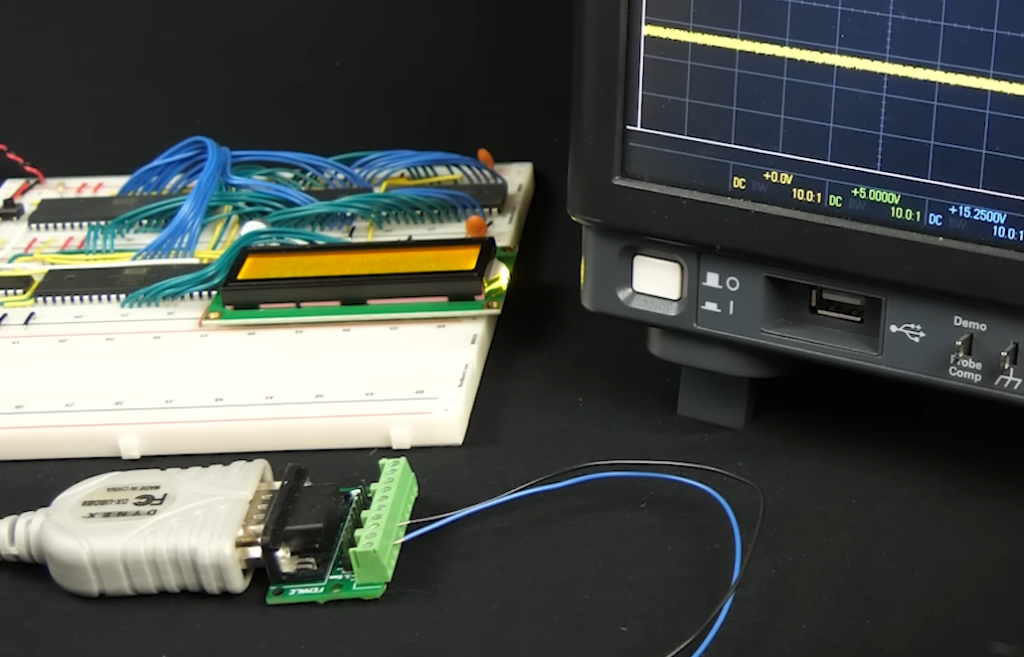
Differences between RS232 vs. DB9
RS232 is a serial communication protocol that enables two devices to communicate over long distances. It was originally developed for telecommunication purposes and it is still widely used in applications such as industry control systems, medical equipment, and POS terminals. DB9 (also known as DE-9) is a type of connector that provides 9 pins which are used for connecting cables between electronic devices.
The main difference between RS232 and DB9 is that RS232 is a communication protocol while DB9 is a physical interface used to connect cables. RS232 transmits data asynchronously in serial form over long distances, while DB9 allows for the connection of up to nine different wires for communication purposes. Additionally, RS232 has a maximum speed of up to 20 Kbps, while DB9 has a much higher data rate of up to 500 Mbps.
Another difference between RS232 and DB9 is that RS232 requires special serial cables that can tolerate long distances and high voltages, while DB9 only requires regular shielded cables. Furthermore, RS232 does not support hot swapping where devices can be connected and disconnected while the system is running, whereas DB9 does support this feature. Lastly, RS232 is mainly used in industrial control systems and medical equipment, while DB9 is primarily used in computer networks.
Overall, RS232 and DB9 are two different communication protocols with distinct characteristics. While RS232 enables long-distance data transmission between two devices asynchronously, DB9 is a physical interface used to connect wires and cables between electronic devices. Although both protocols have their advantages and disadvantages, they are both essential in the modern world of communication [3].

FAQ
What is a DB9 port used for?
A DB9 port is a popular computer serial port interface that is used to connect hardware devices, such as printers and modems. It utilizes a 9-pin connector and can transfer data at rates of up to 115 kilobits per second (Kbps). The DB9 port is also commonly used for connecting game controllers and other types of external devices to computers.
What is the difference between a DB9 and a DB25 port?
The main difference between a DB9 and a DB25 port is the number of pins that each port uses. A DB9 has 9 pins, while a DB25 has 25 pins. As such, the DB25 port can transfer data at higher speeds than the DB9 – up to 250 Kbps. DB25 ports are also more commonly used for connecting external devices such as joysticks or MIDI controllers, whereas the DB9 is more often used for hardware serial connections. Additionally, the physical size of the connectors may differ between a DB9 and a DB25, with the latter being slightly larger.
Are there other types of computer serial ports?
Yes, there are several other types of computer serial ports. These include the RS-232, USB, and FireWire ports. The RS-232 port is typically used for connecting modems and printers to computers. USB is a much newer standard and supports faster data transfer speeds than the traditional serial ports. Finally, FireWire is a type of high-speed connection that is used for connecting digital video and audio devices to computers. All of these ports can be used in conjunction with the DB9 port, allowing users to connect a variety of different hardware devices to their computer.
What is the RS232 standard and 9-pin D connector?
The RS232 standard is a serial communications standard that utilizes a 9-pin D-shaped connector to connect devices to computers. The pins are arranged in two rows, with the first row containing 5 pins and the second row containing 4 pins. This arrangement allows for data transfer speeds of up to 115 Kbps, although this can vary depending on the hardware being connected. The 9-pin D connector is the most commonly used type of connector for serial ports, although there are other types available such as the 8-pin mini-DIN, 25-pin D-shaped, and USB type B connectors.
How do I know which type of port my device requires?
The best way to determine which type of port your device requires is to refer to the documentation or specifications of the device. This information should be included with the product, and it will tell you which type of port is required for proper functionality. If this information is not provided, then you may need to contact the manufacturer directly to determine which port your device requires.
Conclusion Paragraph
RS232 and DB9 connectors are used in many types of communication applications. They are reliable, cost-effective, and easy to use. Although RS232 connectors have been around for a long time, they still offer the best performance when connected to serial devices that need to communicate over short distances or require high-speed data transmission. DB9 connectors are the standard connector used for most computers and computer peripherals, offering quick and easy connection to a wide variety of devices. Both RS232 and DB9 connectors are essential components of any system requiring serial communication, providing reliable connections with minimal effort.
Useful Video: Explaining The Basics Of RS-232 Serial Communications
References:
- https://circuitdigest.com/article/rs232-serial-communication-protocol-basics-specifications
- https://www.l-com.com/frequently-asked-questions/what-is-a-db9-connector#
- https://www.utmel.com/components/rs232-vs-db9-disadvantages-and-advantages-of-rs232-and-db9-differences-between-the-rs232-and-db9?id=1387

